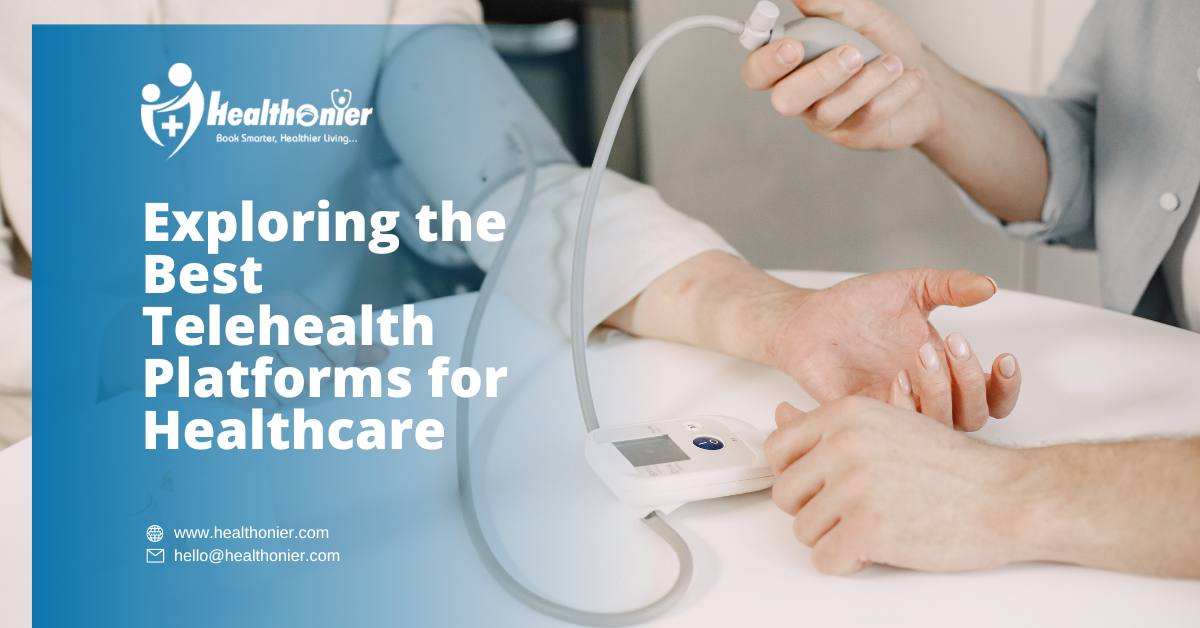In recent years, telehealth platforms have emerged as a transformative force in the healthcare industry. These platforms utilize technology to bridge the gap between patients and healthcare providers, offering a wide range of services remotely. From virtual consultations to remote monitoring, telehealth platforms are revolutionizing the way healthcare is delivered and accessed. In this article, we delve into the world of telehealth platforms, exploring their benefits, features, security measures, challenges, and future trends.
Benefits of Telehealth Platforms
Improved Access to Healthcare: Telehealth platforms break down geographical barriers, allowing patients to consult with healthcare providers regardless of their location. This is particularly beneficial for individuals residing in rural or underserved areas, where access to healthcare facilities may be limited. Additionally, telehealth eliminates the need for travel, saving patients time and money.
Cost-Effectiveness: By reducing the need for in-person visits, telehealth platforms can lead to cost savings for both patients and healthcare providers. Patients can avoid expenses associated with transportation and parking, while healthcare facilities can streamline their operations and allocate resources more efficiently.
Convenience: Telehealth platforms offer unparalleled convenience, enabling patients to seek medical advice from the comfort of their own homes. This is especially advantageous for individuals with mobility issues, chronic illnesses, or busy schedules. With telehealth, patients can schedule appointments at their convenience and avoid long wait times.
Features of a Telehealth Platform
Telehealth platforms encompass a variety of features designed to facilitate seamless communication between patients and healthcare providers.
Video Consultations: One of the core features of telehealth platforms is video consultations, which allow patients to interact with healthcare professionals in real-time. During these virtual visits, patients can discuss their symptoms, receive diagnoses, and obtain treatment recommendations.
Messaging Services: In addition to video consultations, telehealth platforms often include messaging services that enable secure communication between patients and providers. This feature allows patients to ask questions, request prescription refills, and receive follow-up care without the need for a face-to-face appointment.
Electronic Health Records (EHR) Integration: Many telehealth platforms integrate with electronic health records (EHR) systems, enabling seamless access to patient information. This integration ensures that healthcare providers have access to up-to-date medical histories, lab results, and treatment plans, enhancing the quality and efficiency of care.
Security Measures in Telehealth Platforms
Security is a top priority in telehealth platforms, given the sensitive nature of healthcare data.
Encryption: Telehealth platforms employ encryption protocols to safeguard patient information during transmission. This ensures that data remains confidential and secure, protecting it from unauthorized access or interception.
HIPAA Compliance: To comply with healthcare regulations, telehealth platforms adhere to the Health Insurance Portability and Accountability Act (HIPAA) standards. This includes implementing strict privacy policies, conducting regular security audits, and providing training to staff members on data protection best practices.
Challenges and Solutions
While telehealth platforms offer numerous benefits, they also present challenges that must be addressed.
Digital Divide: The digital divide refers to disparities in access to technology, which can prevent certain populations from utilizing telehealth services. To overcome this challenge, telehealth platforms must prioritize accessibility and invest in initiatives to bridge the digital divide, such as providing subsidized devices and internet connectivity.
User Interface and Experience: Another challenge is ensuring that telehealth platforms are user-friendly and intuitive. To enhance the user experience, developers must focus on designing intuitive interfaces, optimizing load times, and providing comprehensive user support resources.
Impact on Patient-Doctor Relationship
Telehealth platforms have the potential to strengthen the patient-doctor relationship by fostering open communication and continuity of care. Through virtual visits and remote monitoring, healthcare providers can maintain regular contact with patients, leading to better health outcomes and patient satisfaction.
Future Trends in Telehealth Platforms
Looking ahead, telehealth platforms are poised to continue evolving and expanding their capabilities. Future trends may include advancements in artificial intelligence, virtual reality, and wearable technology, enabling more personalized and proactive healthcare solutions.
In conclusion, telehealth platforms represent a paradigm shift in the delivery of healthcare services. By leveraging technology to overcome traditional barriers, these platforms offer improved access, cost-effectiveness, and convenience for patients and providers alike. However, challenges such as the digital divide and user experience must be addressed to realize the full potential of telehealth. As technology continues to advance, telehealth platforms will play an increasingly vital role in shaping the future of healthcare delivery.
FAQs
- Are telehealth platforms secure?
Telehealth platforms prioritize security and adhere to strict encryption and privacy standards to protect patient data.
- Can anyone use telehealth platforms?
While telehealth platforms are accessible to many, efforts are ongoing to address disparities in access to technology and healthcare services.
- Do telehealth platforms replace traditional healthcare services?
Telehealth platforms complement traditional healthcare services but may not fully replace in-person visits for all medical needs.
- How are prescriptions handled in telehealth consultations?
Healthcare providers can electronically send prescriptions to pharmacies directly from telehealth platforms, ensuring seamless access to medications.
- What is the future of telehealth platforms?
The future of telehealth platforms holds promise for further integration of advanced technologies, personalized care solutions, and expanded access to healthcare services.
Read More : Artificial Intelligence in Healthcare: Revolutionizing Patient Care


